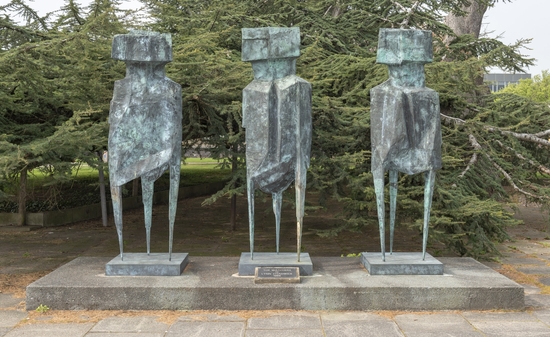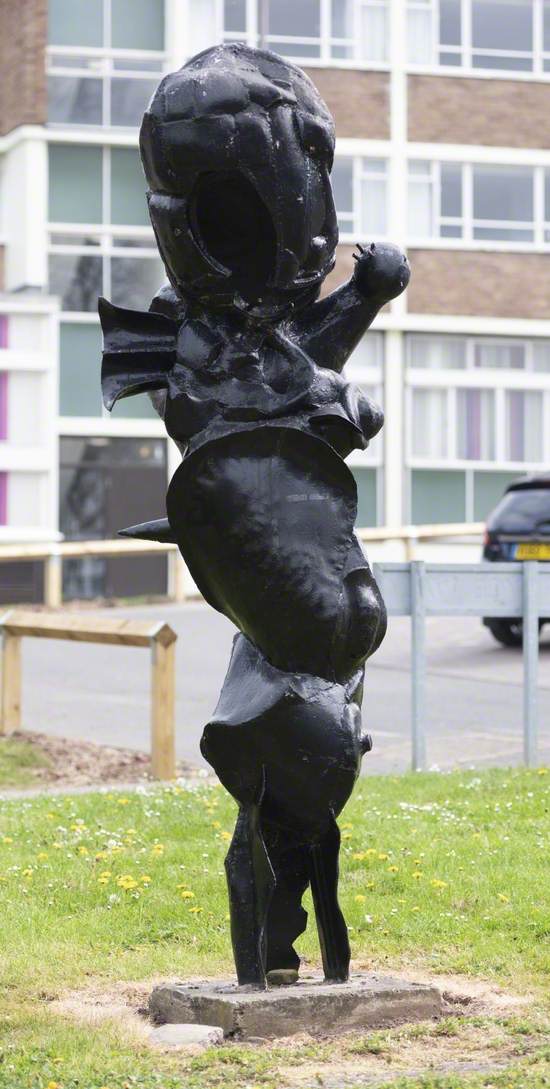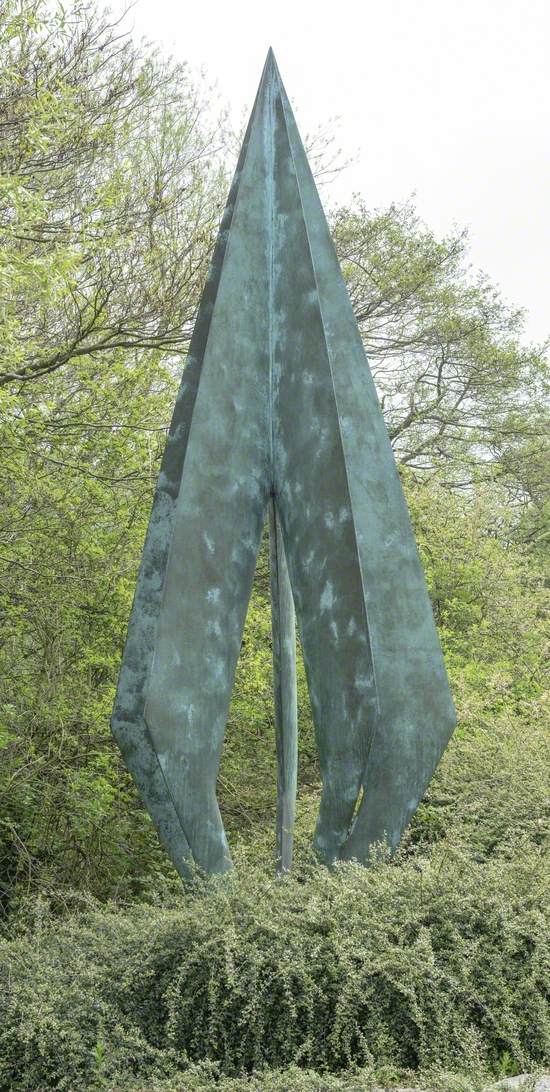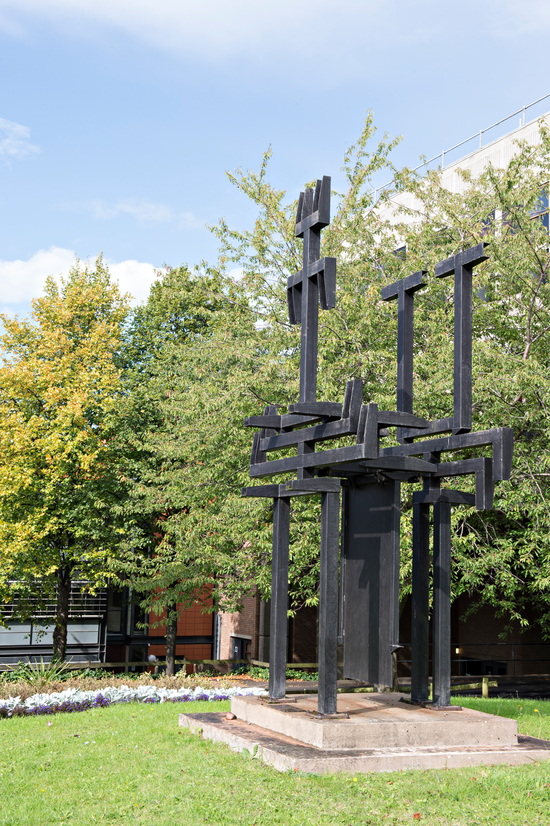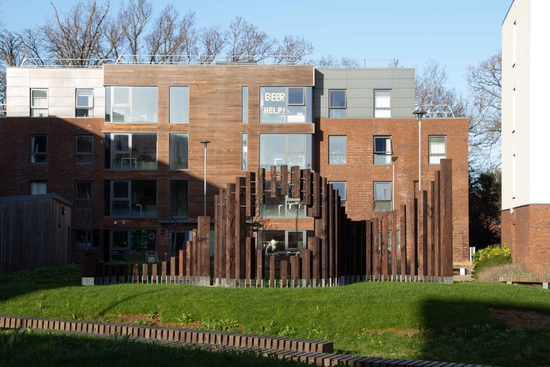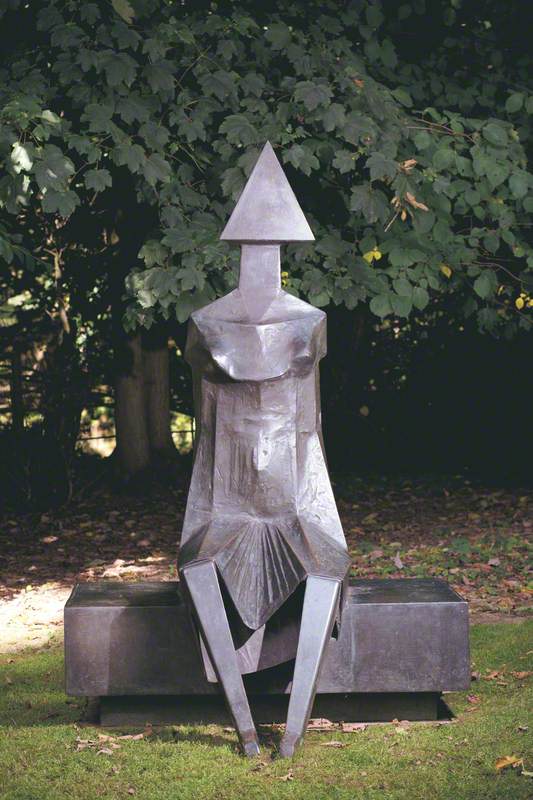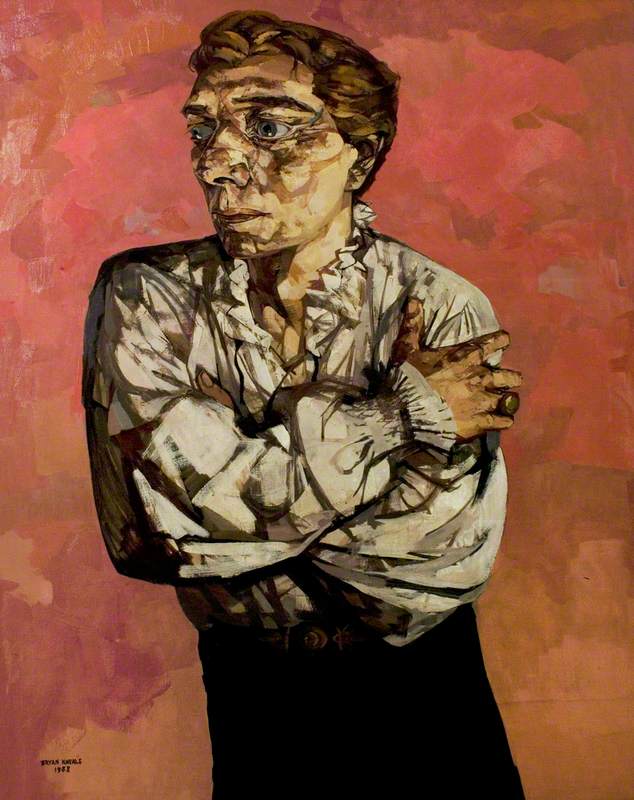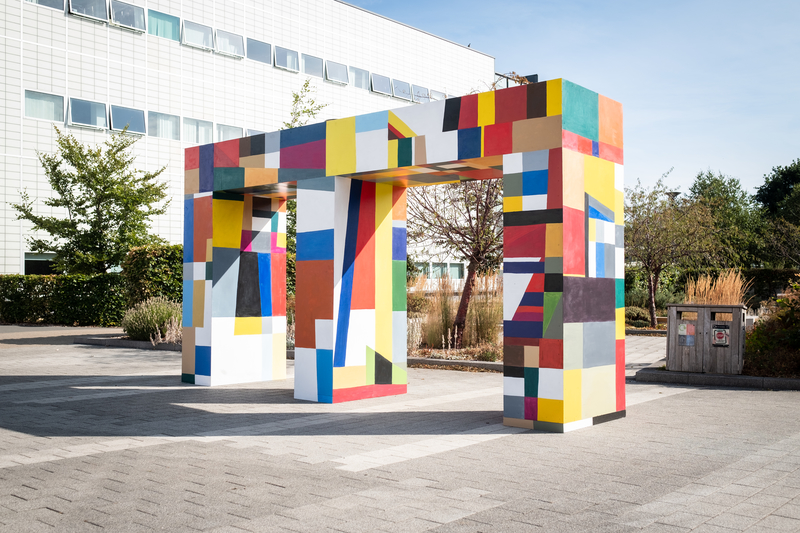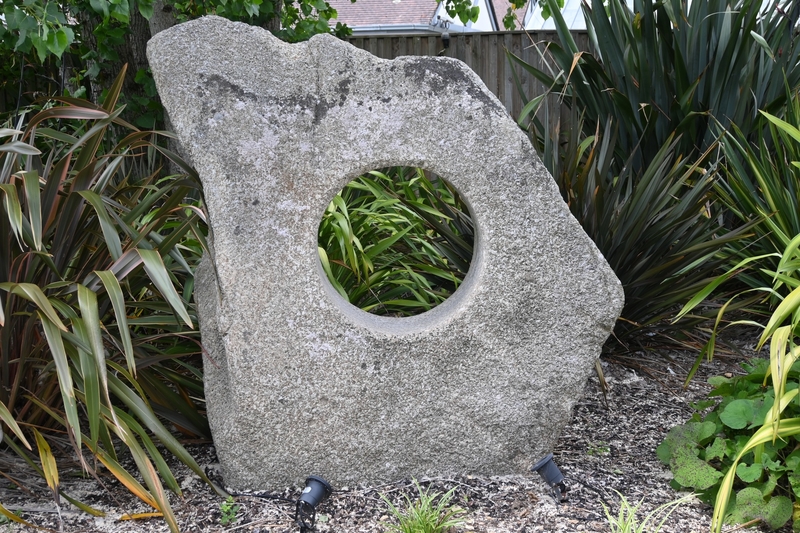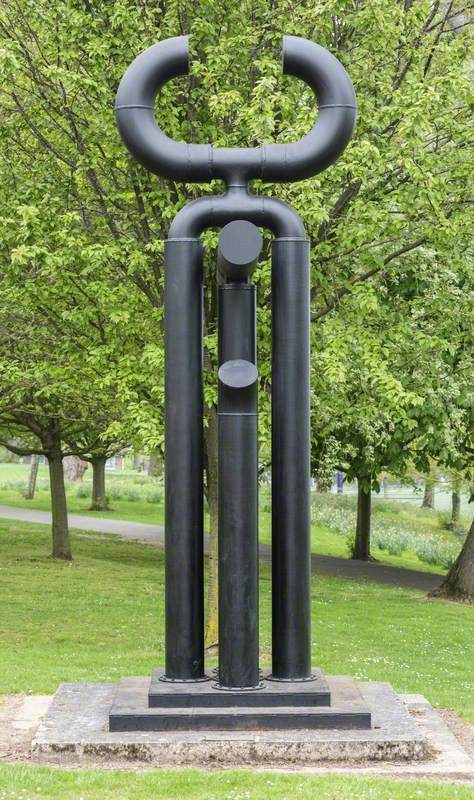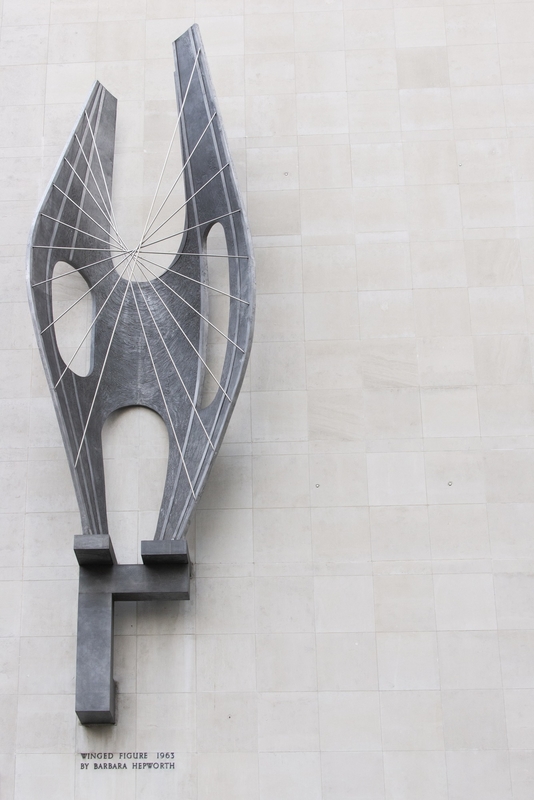Loughborough University is home to over forty sculptures, sited across our campus. Works by internationally renowned figures such as Lynn Chadwick and Atta Kwami are joined by sculptures commissioned and purchased from students. A wide variety of materials and forms are represented, with sculptures speaking both to the institution’s history and changes to the social, political and economic contexts of public sculpture more broadly.
Art Unlocked is an online talk series by Art UK in collaboration with Bloomberg Philanthropies. This Curation is based on a talk by David Bell, Art Collection Curator the 1st May 2024. You can watch a recording of the talk on Art UK's YouTube channel.
One of four castings of Lynn Chadwick's The Watchers, this work was purchased for our campus in 1966. Its anxious forms make it easy to see why Herbert Read named Chadwick among the ‘geometry of fear’ group of sculptors. Chadwick, however, insisted he was guided more by form than the post-war loss of faith in reason and progress Read referenced, and named the Moai statues of Rapa Nui as a key influence on The Watchers. Locally, it was often believed that the three figures represented senior educationalists in the early days of what is now Loughborough University. The Watchers is one of many works in the University’s collection commissioned or purchased under the auspices of Leicestershire Education Authority between 1951 and 1971.
Lynn Chadwick (1914–2003) and Morris Singer Art Foundry Ltd (founded 1927)
Bronze
H 235 x W 34 x D 74 cm
Loughborough University
In the early 1960s Loughborough College of Technology (a forerunner of today’s University) underwent expansion, including the building of new student halls of residence. With the support of Leicestershire Education Authority, each had its own sculpture installed, with Bryan Kneale's Standing Figure chosen for Faraday Hall. Its form perhaps owes something to the postwar vogue for sci-fi horror (Kneale's brother authored Quatermass and the Pit). It was hoped that the abstract nature of these works would push students to become active creators of meaning, and in this instance it certainly worked: the sculpture was soon nicknamed nicknamed 'St. Fred' by Faraday residents, who continue to throw an annual 'St. Fred's Day' party to this day.
Bryan Kneale (b.1930)
Painted welded steel
H 261 x W 78 x D 70 cm
Loughborough University
With 1993’s Flame, by Auriol and Neil Lawson Baker, we arrive at a very different moment in British public sculpture: from the gently avant-garde paternalism of the postwar period, in which public sculpture was designed to educate and/or inspire people going about their everyday lives, we come to the use of sculpture for the celebration of corporate power. It was commissioned by the newly-privatised British Gas, whose research arm was previously based on campus, with its form referencing its new flame logo. Little is known about Auriol Lawson Baker, but Neil was the sculptor of choice for privatised infrastructure companies, additionally producing works for Eurotunnel and British Telecom, as well as being a favourite of Margaret Thatcher.
Neil Lawson Baker (1938–2022) and Auriol Lawson Baker
Bronze & steel
H 180 x W 18 x D 67 cm
Loughborough University
It's perhaps appropriate that the neighbouring sculpture to The Flame should be entitled Strike. It's one of five large-scale steel works produced by Paul Wager, all of which can now be found on our campus, where he once taught sculpture. Described in Owen Hatherley’s Moden Buildings in Britain as ‘aggro neo-Constructivism’, they make use of the materials, forms and technical processes of heavy industry. Their names – Revolution, Strike, Pulse – are also suggestive of the utopian energy that Constructivism identified in industrial production and its labour struggles. Yet they’re also tinged with melancholy, with Wager inspired by the decline of British heavy industry and related communal forms, as well as the environmental devastation it wrought.
Paul Wager (b.1949)
Black painted welded steel
H 61 x W 255 x D 221 cm
Loughborough University
Atsiaƒu ƒe agbo nu (Gateway to the sea) is among the last works produced by the Ghanaian artist Atta Kwami, who lived in Loughborough until his death in 2021. Designed to provoke reflection on immigration and emigration, it offers a joyous riposte to the architectures of control usually found at borders.
The work gives sculptural form to Kwami’s interest in vernacular structural, material and decorative forms. This approach is explored in his 2011 book Kumasi Realism 1951-2007: An African Modernism, which rejects the dichotomous treatment of African culture as rooted in ‘tradition’ against a (supposedly) Euro-American ‘modernity’, and brings everyday forms of visual culture such as sign-painting into conversation with contemporary art.
Atta Kwami (1956–2021)
Painted marine plywood
H 400 x W 600 x D 120 cm
Loughborough University
Flux is the most recent addition to our sculpture collection. Funded by Loughborough alumnus Barry Eccleston and his wife Valerie, it was produced by an inter-disciplinary team of undergraduate students utilizing aesthetics and techniques from their degree programmes (Architecture, Engineering and Fine Art). It makes clever use of both positive and negative space, with considerable thought given to how its shadow impacts the surrounding area.
The sculpture’s form references two journeys: its undulating shape is inspired by the highs and lows of the ‘student journey’ while the circular cut-out references Loughborough graduate Claudia Parson’s circumnavigation of the world by car (the first by a woman). It is also designed to encourage passers-by to take time out of their day to consider the work from different angles, perch on its lower elements, or use the work to frame the environment.
Chiara Brown and Fred Hendry Briars and Andrea Pocock
Burned & oiled larch wood
H 278 x W 800 x D 289 cm
Loughborough University
